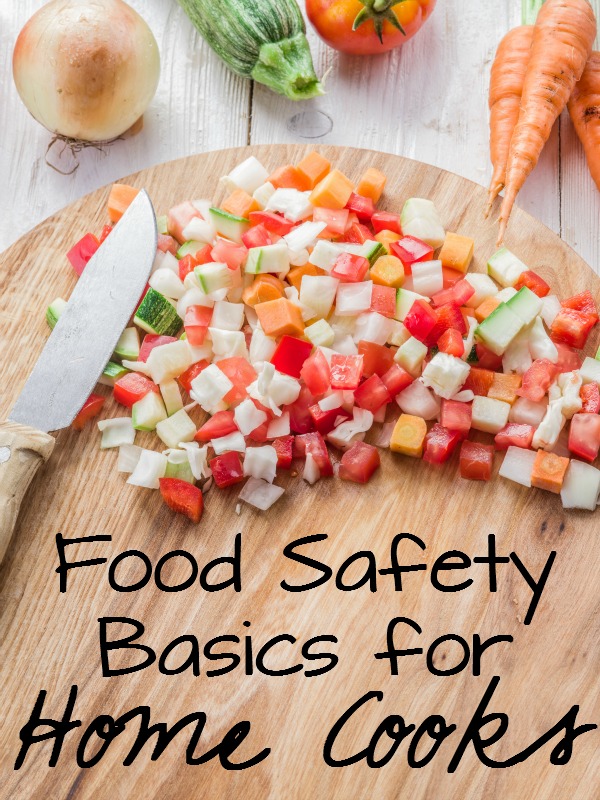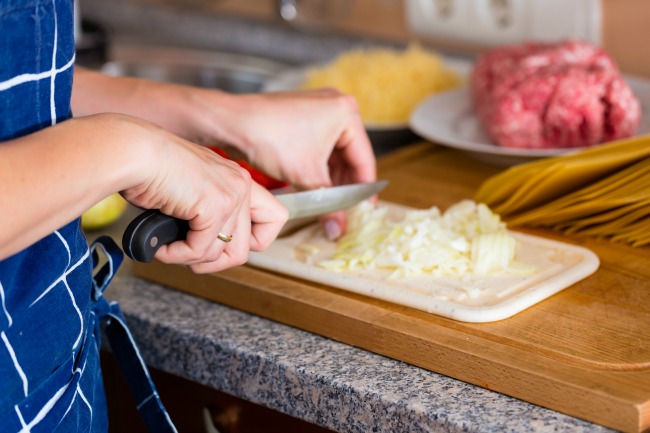I am sure most of you know that I have a passion for food. Something else that is a passion of mine might seen kind of strange, but the two are very related. One could almost say I am obsessed with this other subject; cooking in a clean kitchen. What most people call the “stomach flu” is usually due to eating food that is not properly prepared and then the germs get spread.
When preparing food for yourself and others to eat, it is VITAL that you use some precautions. Cleanliness in the kitchen is not just about wiping things down and doing the dishes. With just a few simple changes, you can make your kitchen a “clean cookin’ machine”!
Food Safety Basics for Home Cooks
First lets start with the basic. It may seem obvious to you, but hand washing is essential when cooking both before, during and after.
Here are some other tips for cooking safely in the kitchen
- Never “re-use” a cutting board for a different task without washing first, in hot soapy water. Many people just flip over the cutting board and use the same board for chopping both veggies and cutting up meat. This is a huge no-no! This is called cross contamination and is the #1 way food is made unsafe for consumption. I have actually have two different colored boards for these jobs. One is for meats only and the other is for veggies etc. Make sure to disinfect the counter after cutting up something on a board to prevent juices from other foods getting into your RTE (ready-to-eat) foods.
- Keep meat on the bottom of your fridge and always place it on a plate to prevent spillover of juices and blood.
- NEVER eat food that requires refrigeration if it has sat out at room temp more than 3-4 hours and always cool down food before placing in your fridge (more on that in another article). If you put hot food in your fridge, it can alter the temp in the fridge and cause spoilage of other foods.
- NEVER let food thaw on the counter. Sure people have done it and not gotten sick, but why risk it? If food that requires cooking or refrigeration sits out more than 4 hours, it can grow enough bacteria to make you sick even IF you cook it after.
- When re-heating, always reheat to 165 degrees F internally. Get in the habit of checking foods when you reheat them. If re-heating in a microwave, stop halfway and stir the item to break up any cold spots and distribute the heat evenly an continue microwaving.
- Make sure you cook meat to proper internal temps. Many people don’t know what the proper temps for foods are so I have included it here for some common foods. It isn’t enough to just visually see that you think it is done. Place a thermometer in the meat and see what temp it stays at for 15 seconds.
- Don’t just wipe up messes, disinfect them with hot soapy water before moving forward. This goes for your hands, too. If you cut up veggies, wash them thoroughly before moving onto your next task. It only takes 30 seconds!
Proper meat temps:
For Chicken, always cook to 165 Degrees F
For Ground meat like beef, its 160.
For fish, cook to 145
For Pork, cook to 145.
It is essential that you have a food thermometer. You can get an easy to read digital thermometer for a low cost on Amazon. When I say cook to a certain temperature, it is vital that you do so as bacteria can survive if you don’t.
I suggest keeping this chart from the Food Safety website handy.
This post contains affiliate links. Thank you for supporting my blog!



Some very good tips! I am always surprised at how many people will stick food out on their counter to thaw through out the day!
Alaina Bullock recently posted..Mia Mariu
It’s very encouraging to see this topic. My hubby talks about this all the time. His father is a chef so he grew up with the safety rules in the kitchen.